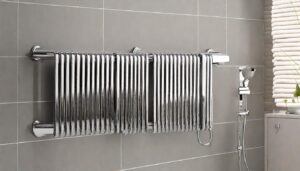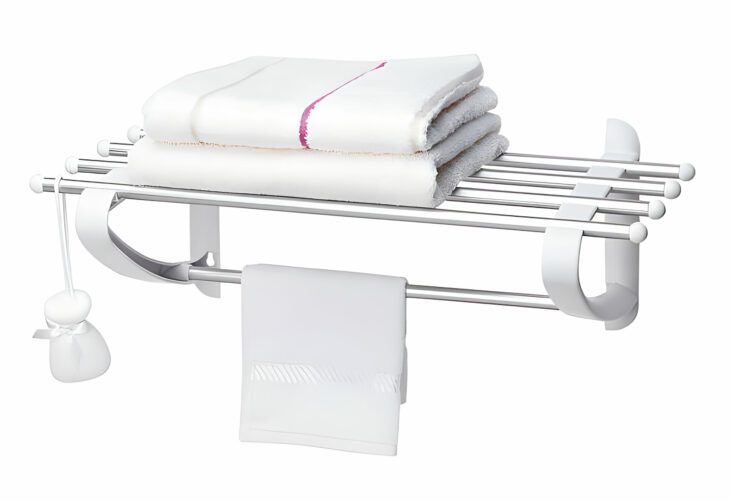Towel warmers, often considered a luxurious addition to bathrooms, serve the dual purpose of providing warm towels and heating the space. However, a common concern among potential buyers revolves around their electricity usage. Are these devices significant power guzzlers? Let’s delve into this query and unravel the complexities associated with the electricity consumption of towel warmers. The perception of whether towel warmers consume substantial electricity varies based on multiple factors. Generally, these devices are designed to be energy-efficient. However, the actual consumption depends on the model, size, usage patterns, and settings. Larger towel warmers with higher wattage can potentially consume more electricity, especially if used continuously at maximum heat settings. Yet, compared to many household appliances like hairdryers or space heaters, the electricity usage of towel warmers is often relatively moderate.
Introduction to towel warmer
Towel warmers, also known as towel rails or heated towel racks, are fixtures designed to heat towels, robes, or other fabrics, providing a cozy and comfortable experience after a shower or bath. They come in various types, including electric, hydronic, and even freestanding models, catering to diverse preferences and needs. Electric towel warmers, the focus of this discussion, are directly connected to the electrical supply. They operate by converting electrical energy into heat, warming the towels hung on them.

Electricity consumption: Understanding wattage
To comprehend the electricity usage of towel warmers, it’s crucial to grasp the concept of wattage. Wattage refers to the rate at which electrical energy is used or produced. In the context of towel warmers, their wattage directly influences the amount of electricity they consume. The electricity usage of these devices is measured in watts per hour (W/h) or kilowatt-hours (kWh), representing the power consumption over a specific duration.

Factors affecting electricity consumption
The electricity usage of towel warmers can be influenced by various factors. The size and type of the warmer, frequency of use, duration of operation, and insulation play significant roles in determining the energy consumed. Additionally, the heat retention capability and energy-saving features incorporated into modern towel warmers can affect their overall efficiency and electricity usage. Electricity consumption is influenced by various factors that dictate the usage and efficiency of electrical devices. The wattage of a device significantly impacts its electricity consumption, with higher wattage often correlating to increased power usage. Additionally, the size and type of the appliance play crucial roles; larger devices tend to consume more electricity than smaller ones. Usage patterns and duration of operation also affect consumption levels; frequent or extended use leads to higher electricity usage. The settings and modes used on a device can impact consumption; energy-saving or low-power settings can reduce electricity usage. Environmental conditions such as temperature and humidity might influence how much electricity a device consumes. The age and condition of appliances can affect efficiency, with older devices often being less energy-efficient. Lastly, maintenance and regular servicing can impact energy consumption, ensuring devices operate optimally and consume electricity more efficiently.

Efficiency and eco-friendliness
Despite using electricity, many towel warmers are designed with energy-efficient features. Timers, thermostats, and programmable settings allow users to optimize their usage, reducing energy consumption without compromising on warmth and comfort. Moreover, certain models use less electricity by employing advanced heating technologies or better insulation, contributing to their eco-friendliness. Efficiency and eco-friendliness in appliances are crucial considerations in today’s environmentally conscious world. Modern appliances often integrate energy-efficient features like timers, programmable settings, and smart sensors to optimize electricity usage. These advancements aim to reduce energy consumption without compromising on performance. Eco-friendly appliances also utilize materials that are sustainable and have minimal environmental impact during production and disposal. Energy-saving modes and low-power settings contribute significantly to reducing the carbon footprint of appliances. Moreover, some devices incorporate innovative technologies that harness renewable energy sources, further enhancing their eco-friendliness. Certification programs and energy ratings help consumers identify and choose appliances that meet specific efficiency and environmental standards. Additionally, the design and engineering of appliances are evolving to prioritize energy efficiency, encouraging a shift toward more sustainable choices in households and industries alike. Efficient appliances not only benefit the environment but also result in cost savings for users by reducing energy bills over time.

Tips to reduce electricity usage
To minimize electricity consumption without sacrificing the functionality of towel warmers, several strategies can be implemented. Adjusting the settings to lower temperatures, using timers to operate them only when needed, and ensuring proper maintenance for optimal performance are effective ways to reduce energy usage .Reducing electricity usage involves adopting simple yet impactful practices. Adjusting thermostat settings, ensuring efficient insulation, and sealing air leaks in the home help conserve energy. Using energy-efficient appliances and opting for LED lighting significantly lowers electricity consumption. Implementing power-saving habits like unplugging devices when not in use and utilizing power strips for multiple electronics can cut standby power consumption. Maximizing natural light during the day and using curtains or blinds to insulate against temperature changes aid in reducing reliance on artificial lighting and heating. Regular maintenance of appliances ensures they operate optimally, minimizing energy waste. Employing programmable thermostats and timers helps regulate usage, optimizing electricity consumption. Finally, educating oneself about energy-saving practices and encouraging their adoption in daily routines contributes to a sustainable reduction in electricity usage.

Impact on utility bills
The impact of towel warmers on utility bills varies based on individual usage patterns and the energy efficiency of the device. While they contribute to electricity consumption, their impact might not be as substantial as presumed.
Comparison with other appliances
In comparison to other household appliances, the electricity usage of towel warmers might be relatively moderate. Understanding this comparison provides perspective on their energy consumption.
Environmental consideration
While electricity usage is a concern, certain towel warmers align with environmentally friendly practices. Energy-efficient models reduce carbon footprints, contributing positively to sustainability efforts.
Addressing common myths
Dispelling misconceptions around towel warmers and their electricity consumption is essential. Clarifying myths helps users make informed decisions.
Choosing the right towel warmer
Selecting an appropriate towel warmer involves considering energy efficiency ratings, size, and specific features tailored to individual preferences.
User practices for efficiency
Educating users on efficient practices, such as using timers and optimizing usage frequency, can significantly reduce electricity consumption.
Maintenance and longevity
Proper maintenance not only ensures the longevity of the device but also aids in maintaining energy efficiency over time.
Cost benefit analysis
Conducting a cost-benefit analysis weighs the electricity cost against the comfort and convenience provided by towel warmers, aiding in decision-making.
Conclusion
Towel warmers do consume electricity but with varying degrees depending on several factors. By choosing energy-efficient models and implementing smart usage practices, users can minimize their electricity usage without compromising on the comfort offered by these devices.


[…] Towel warmer use a lot of electricity […]
[…] Towel warmer use a lot of electricity […]
[…] Towel warmer use a lot of electricity […]
[…] Towel warmer use a lot of electricity […]
[…] Towel warmer use a lot of electricity […]
[…] Towel warmer use a lot of electricity […]
[…] Towel warmer use a lot of electricity […]
[…] Towel warmer use a lot of electricity […]
I like the article
Good, 👍💯
[…] Towel warmer use a lot of electricity […]
[…] Towel warmer use a lot of electricity […]
🤩🤩🤩
[…] Towel warmer use a lot of electricity […]
We are a gaggle of volunteers and starting a brand new scheme in our community. Your web site offered us with helpful information to work on. You have done a formidable process and our entire group might be thankful to you.